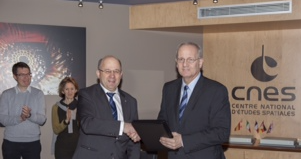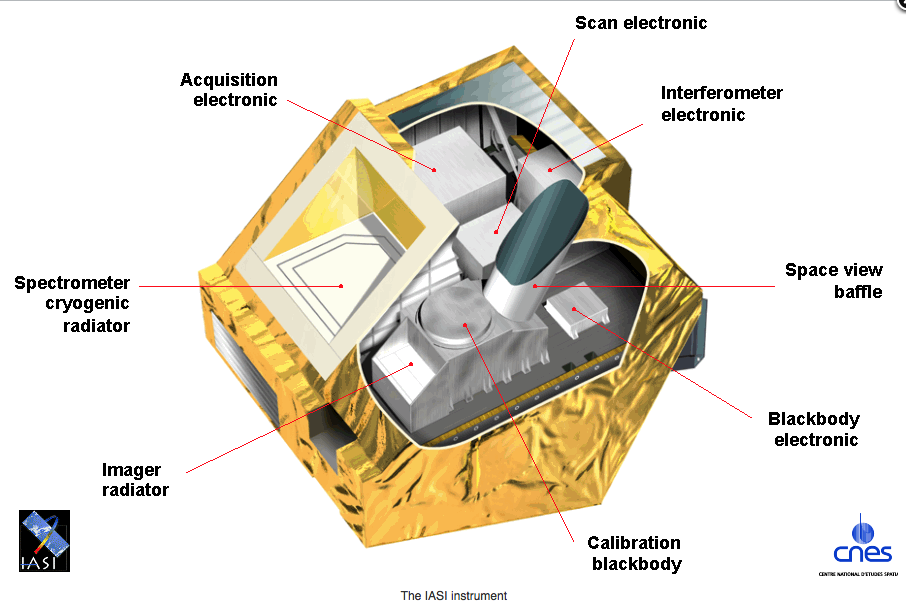
EUMETSAT’s Director-General, Alain Ratier, and Jean-Yves Le Gall, President of CNES, © CNES/Olivier PASCAUD, 2015
[Satnews] EUMETSAT’s Director-General, Alain Ratier, and Jean-Yves Le Gall, President of CNES, signed a cooperation agreement for the development of a new generation of Infrared Atmospheric Sounding Interferometers (IASI-NG) to be flown on three successive Metop-SG A satellites of the EUMETSAT Polar System of Second Generation (EPS-SG) in the 2021-2040 timeframe.
The agreement continues the successful cooperation established for the development of the first generation of IASI instruments flown on the current Metop satellites. The ingestion of vertical profiles of temperature and moisture extracted from IASI data by advanced numerical weather prediction (NWP) models has been one key factor for the significant improvement of weather forecasts up to 10 days over the last decade.

Under the new agreement, CNES will develop the full IASI-NG system composed of the instrument and the data processing chain, procure recurrent instruments on behalf of EUMETSAT and provide support to operations.
EUMETSAT will fund 30 percent of the development costs for the first instrument and the recurrent instruments in full, integrate the IASI-NG data processing chain in its operational ground systems and exploit the IASI-NG instrument chain throughout the lifetime of the EPS-SG system.
IASI-NG will measure infrared spectra with twice the spectral resolution and twice the radiometric accuracy of IASI. This will allow the extraction of more accurate vertical profiles (soundings) of temperature and moisture with higher vertical resolution close to the surface, which is one key requirement for further improving numerical weather forecasts at global and regional scales, from 12 hours to more than 10 days ahead.
These improvements will also allow the retrieval of more quantitative information on trace and greenhouse gases (e.g. ozone, methane and carbon monoxide) compared to IASI, including vertical profiles where currently only total columns are measured. This will be essential for air quality forecasting and climate monitoring, in combination with other instruments, including the Copernicus Sentinel-5 instrument also flown aboard the Metop SG-A satellites and the Merlin methane profiling mission developed by CNES and DLR.
The European Organization for the Exploitation of Meteorological Satellites is an intergovernmental organization based in Darmstadt, Germany, currently with 30 Member States (Austria, Belgium, Bulgaria, Croatia, Czech Republic, Denmark, Estonia, Finland, France, Germany, Greece, Hungary, Iceland, Ireland, Italy, Latvia, Lithuania, Luxembourg, the Netherlands, Norway, Poland, Portugal, Romania, Slovakia, Slovenia, Spain, Sweden, Switzerland, Turkey and the United Kingdom) and one Cooperating State (Serbia).

